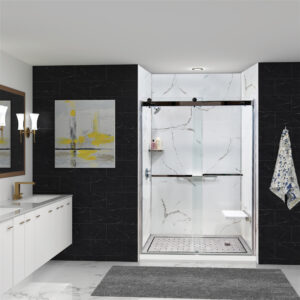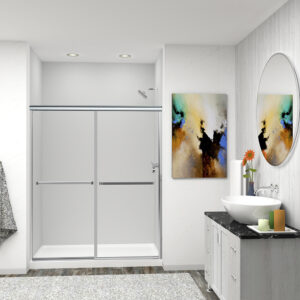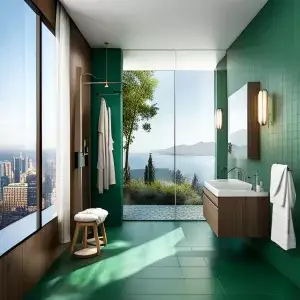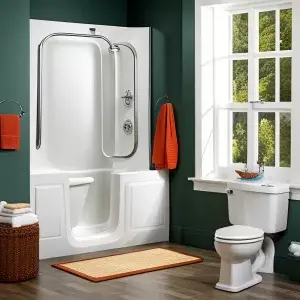Walk-in Tubs: A Necessity, Not a Luxury
Aging isn't a choice, but how we adapt to it can be. One of the most meaningful changes we can make in our homes to accommodate aging is the installation of a walk-in tub. Often dismissed as a luxury, I firmly believe that walk-in tubs are a necessity for the aging population. Here's why.

Get A Free Estimate
Making Life Easier
Aging can come with physical limitations that make simple tasks daunting. Stepping over the high walls of a traditional bathtub can become risky and stressful. Walk-in tubs eliminate this concern with their low-entry doors, allowing seniors to step in and out effortlessly. The built-in seat and handrails offer additional support and stability, transforming bath time from a chore into a moment of relaxation.
But it’s not just about ease of use. Walk-in tubs are designed with therapeutic features like hydrotherapy jets and heated surfaces. These benefits can help alleviate chronic pain, improve circulation, and reduce stress—essential elements for maintaining a high quality of life as we age.
High Quality and Affordable
Many people shy away from walk-in tubs because they perceive them to be prohibitively expensive. However, the market has evolved, and a variety of high-quality, affordable options are now available. Brands are increasingly recognizing the importance of these tubs and are offering models that cater to different budgets.
Investing in a walk-in tub is an investment in health and safety. Considering the potential medical costs associated with falls and injuries, not to mention the peace of mind they offer both users and their families, the cost of a walk-in tub becomes a smart financial decision.
Mobility and Accessibility for Aging and Disabled
For those dealing with mobility issues or disabilities, a walk-in tub can be a game-changer. Traditional bathtubs can be obstacles, but walk-in tubs provide the accessibility needed to maintain independence. They make it possible for aging individuals and those with disabilities to bathe without assistance, preserving dignity and autonomy.
In addition to accessibility, walk-in tubs often come with non-slip flooring and quick-drain features, further minimizing the risk of accidents. For caregivers, this means less worry and reduced physical strain when assisting loved ones, creating a safer environment for everyone involved.
Conclusion
Walk-in tubs are far from a luxury; they are a crucial addition to any home for aging individuals or those with mobility challenges. By making life easier, ensuring high quality and affordability, and providing essential mobility and accessibility, walk-in tubs offer a blend of practicality and comfort that can’t be overlooked.
If you’re considering ways to make your home safer and more accommodating for your later years or for a loved one, a walk-in tub should be at the top of your list. It’s not just about adding a feature to your bathroom; it’s about investing in your well-being and peace of mind.
Let’s change the narrative around walk-in tubs and recognize them for what they truly are—a necessity for a safer, more comfortable future.










